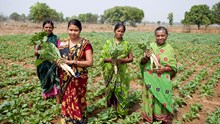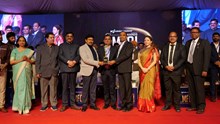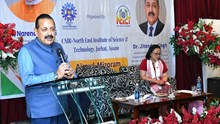
Feeding the world? Easiest said then done - it's one of the messiest challenges of the 21st century. The world produces more food than ever before, a lot of credit goes to scientific breakthroughs in agriculture, crop genetics, and food technology. Yet, the question of what food should be eaten, and by whom remains contentious. As Amos Zeeberg notes in his essay The Food Wars (Aeon), "the true battle around food isn't just about nutrients or efficiency but about culture, trust, and identity."
This editorial examines how scientific advancement and cultural traditions collide to shape the future of food, and why solving hunger isn't just about what we know but also what we believe and value. By connecting this idea with India's unique food landscape and the "Eat Right Movement", we can better understand how science and culture work together in policy and public health.
Tradition Meets Modern Nutrition - An Indian Context
India's food landscape is a blend of tradition, religion, and regionally diverse cuisines. Here, feeding the population means working with the faith-based food customs, vegetarianism, seasonal diets, and Ayurveda-inspired principles. Nutrition policies, therefore, cannot afford to be culturally tone-deaf. Furthermore, quantifiable metrics like calorie counts, protein quality, and micronutrient enrichment are the main focus of the scientific approach to eating. For example, a key component of India's public health strategy is fortifying staple food with iron, iodine, or vitamin A.
According to the National Family Health Survey-5 (2019-21) as shown in Table 1, 35.5% of Indian children under five are stunted, and 32.1% are underweight, while obesity in adults is steadily rising, especially in urban areas. These numbers glaringly show India's double burden of persistent undernutrition coupled with growing rates of obesity and anaemia. Despite major investments in food science and fortification, almost 1 in 3 Indian children is still stunted or underweight. This complex scenario has led to many scientific- and policy-based interventions, such as food fortification programs, mid-day meal schemes, and more recently, the "Eat Right Movement".
Table 1: Nutritional Status of the Indian Population
|
Indicator |
Urban (%) |
Rural (%) |
Total (%) |
|
Children under 5 stunted |
30.1 |
37.3 |
35.5 |
|
Children under 5 underweight |
26.0 |
33.8 |
32.1 |
|
Women (15–49) obese |
31.3 |
17.1 |
24.0 |
|
Men (15–49) obese |
29.6 |
16.0 |
22.9 |
|
Anaemia in women (15–49) |
57.2 |
58.2 |
57.0 |
(Source: NFHS-5, Ministry of Health and Family Welfare, GOI)
Nutritionism in Practice, and Its Discontents
Scientists and technocrats often frame food as a delivery vehicle for the right mix of nutrients. "A protein bar and a home-cooked thali may be nutritionally equivalent," but culturally, they are worlds apart.
While scientifically engineered foods (GMOs) can address nutrient deficiencies at scale, they often face cultural resistance and fail to get widespread acceptance. Why? because food is never just about sustenance. It is more about memory, heritage, and a sense of belonging. So, when science introduces a food that conflicts with these values, people may reject it, not for practical reasons, but for emotional, and symbolic ones.
India's Eat Right Movement: Bridging culture and science
The Eat Right Movement was launched in 2018 with the goal of "transforming the food ecosystem of the country" using interventions like public awareness campaigns, food safety protocols, and food fortification. With its emphasis on behavioural change initiatives such as "Aaj Se Thoda Kam" (Eat Less from Today), "Eat Safe," and "Eat Fortified", Eat Right India goes beyond nutritionism. These initiatives are designed to resonate with Indian consumers who often rely on traditional food wisdom.
By March 2023, more than 6 million food businesses had earned food safety certifications, and over 27,000 schools, colleges, hospitals, and workplaces had registered as "Eat Right Campuses". However, the movement's own studies admit that tradition, trust, and nutritional adaptation to local custom are necessary for acceptance. For instance, fortification of rice with iron was met with pushback in several states because of cultural unfamiliarity, and taste concerns.
Public health is not just a technical matter; it twirls with "the everyday politics of the thali", what people will or will not eat. The global food crisis cannot be fixed by leaving culture off the menu. As nutritionist Marion Nestle often reminds us, "People eat food, not nutrients." Solutions need to work with local food-habit's, support regional farming traditions, and respect the knowledge of the community. The future of food is not just a laboratory challenge, but a dialogue about values and identity.
Conclusion
India's food question, like that of the world's, needs more than just laboratories and data-based programs. The evidence in the table indicates in spite of the scientific advancement, malnutrition and obesity can coexist. Furthermore, the foods people accept or reject are strongly influenced by trust, tradition, and custom. Thus, feeding the globe, then, is not just about what science can accomplish but also involves how communities choose to eat, commemorate their culinary traditions, and nourish themselves.













Share your comments